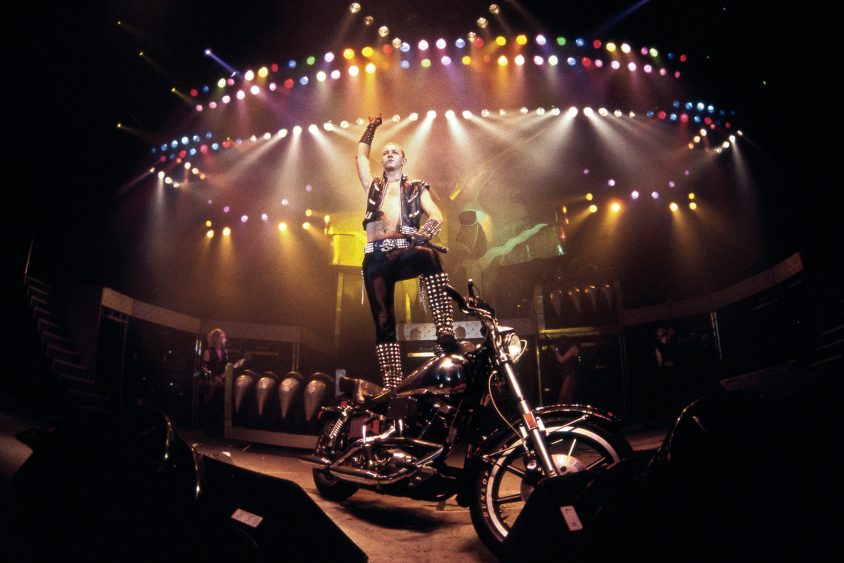Motorcycles, since the very first bicycle had a motor strapped to it and driving the rear wheel, have always been about rebellion. Two wheels down instead of four, having acceleration and braking that far outclasses most cars even on the slowest bikes, and, in places where it is legal at least, cutting between rows of cars stuck in a traffic jam because our bikes are so narrow by comparison. We get the reputation of having a screw loose here and there, and you know what? That’s perfectly fine by us because we’re out there enjoying the ride!
It is that whiff of rebellion that formed some of the more classic movements in motorcycle history, from the first baggers being modified cruisers, the whole chopper scene, the cafe racers of the 60s and 70s, and more. One movement that many don’t think about, however, is how motorcycles have influenced a certain style of music from the 1960s through to today. We are, of course, talking about the whole genre of rock and roll.
Even the name alludes to the fact that motorcycles were an influence. The “roll” part of the name holds many historical influences, from the 17th century term “rocking and rolling” to describe a sailing ship in rough seas, to the “rolling” in the roaring 20s being a sexual analogy. Yet, by the 1960s, “rolling” was also used to describe “rolling down the road,” and it is there that things truly get interesting.
Classic Rock: How Motorcycles Became The Icons Of Rock Music Through The 60s To The 80s.
The 1960s
America and the world were a very different place in the 1960s than today, especially in music and culture. Back then, conservative idealism and the social contracts of liberalism and materialism were rebelled against by a young generation that wanted more out of life. Eventually called “hippies,” this generation of counter-culture was all about expression, art, beauty, peace, and basically being everything that their parents weren’t.
Rock had been around for a few years by the time the 1960s started, with the charge led by now-legendary names like Buddy Holly and Elvis Presley. In 1961, a new rock group was formed by some friends in California that named themselves The Beach Boys, and in 1964, the first true song about a motorcycle came out, Little Honda. Almost everyone that rides bikes knows the first line of the second verse, namely “It’s not a big motorcycle, just a groovy little motorbike.” Of course, the song was about the Honda Super Cub 50.
While there were a few songs here and there that also touched on motorcycles, including the pop hit The Leader Of The Pack by the Shangri-Las, it wasn’t until 1968 that one of the single-most classic songs of rock about the culture and rebellion of motorcycles was released. A small group of Canadians and Americans joined together to form a little band called Steppenwolf 1967, and in promotion of their upcoming self-titled debut album, three singles were released. The first two, A Girl I Knew and Sookie Sookie were decently catchy, but the third single… everyone, everyone knows that song.
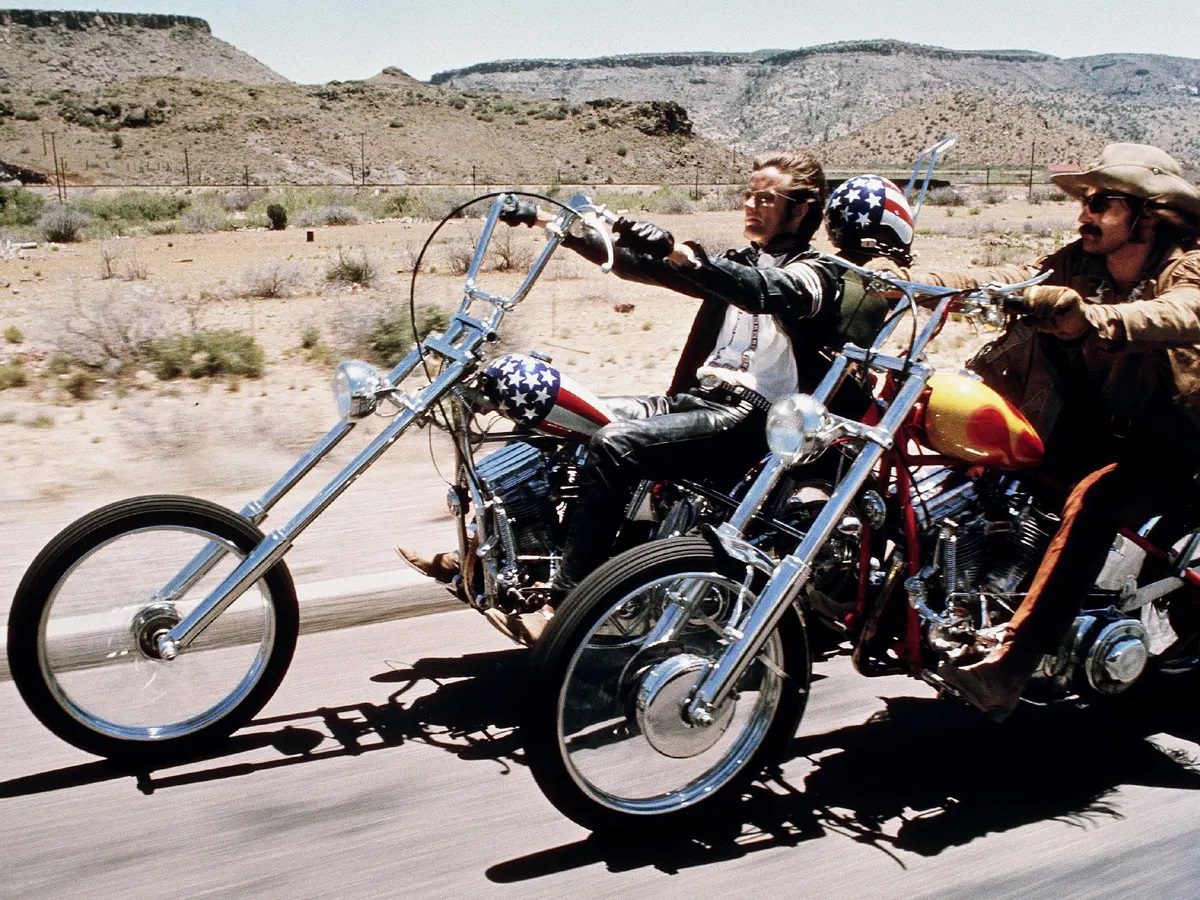
We are, of course, talking about Born To Be Wild. A counter-culture smash hit, the entire song describes what many consider to be the classic “biker” image, the cruiser rider with the half-helmet, sunglasses, beard in the wind, maybe riding a chopper. It used heavily distorted guitars to mimic the burble and roar of a motorcycle exhaust, and the first two lines describe all of us, even today: “Get your motor runnin’ / Head out on the highway.”
The 1970s
A lot happened in the 1970s, both in the motorcycle world and the music world. The sportbike was solidified not just as a concept but as an actual thing people would want to buy, with some classics including the BMW R90S and the inline-six monster that sounded like a Formula 1 car, the Honda CBX1000. Also in this timeframe, the Harley-Davidson XR750 came out and became the bike to have for dirt track racing.
As well, rock was becoming more than just a little corner of the musical spectrum and was moved to being an entire genre. Under that umbrella, you would find hard rock, soft rock, acid rock, psychedelic rock, as well as emerging styles like punk rock and heavy metal. Of those sub-genres, apart from heavy metal, it could be said that some of the most bike-heavy songs emerged from the softer side of the rock scene.
This is exemplified, both literally and tragically, by the Allman Brothers, Duane and Gregg. Both loved motorcycles and both rode for many of the same reasons we do today, namely the freedom, the hobby, and the enjoyment of it. On their second studio album, Idlewild South, one of the classics of motorcycle culture appeared, a song by the title of Midnight Rider. The song itself became part of cruiser culture, as it describes a man with only his motorcycle and a silver dollar to his name, riding an endless highway to get away from the law pursuing him.
The tragedy of the Allman Brothers is that just over a year after the album’s release, Duane Allman died after crashing on his Harley-Davidson Sportster, the same bike that influenced Midnight Rider. While the Allman Brothers Band would continue, they never wrote another song that involved motorcycles.
Another classic of cruiser culture came out in 1974, by a recently formed band called Foghat. They had a few years of middling success, becoming established but not “known.” That changed in 1974 with the blues-rock song Slow Ride. As the 1970s were all about exploring subjects in music that would have never made it in the 60s, the song is a beautiful example of the “musical double entendre.” On one hand, it’s all about cruising and the pleasure one derives from it, and on the other hand, it’s all about a different type of pleasure.
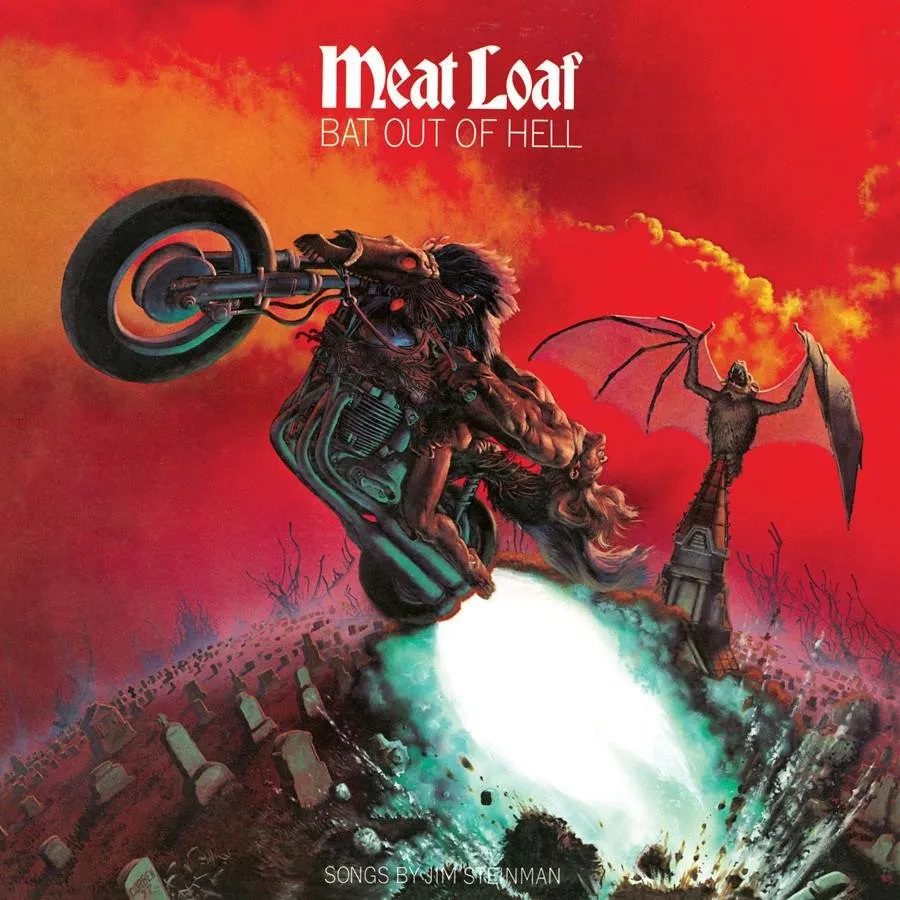
However, in 1977, there came not just a song, but an entire album that revolved around motorcycles. It was released as the debut album by an artist that had dabbled in music, theater, film, and motorcycles throughout his life to that point. Born as Michael Lee Aday, he was much better known as Meat Loaf, and that album is of course Bat Out Of Hell. Interestingly, the whole concept of the album was a rewrite of Peter Pan by Meat Loaf and songwriter Jim Steinman, where instead of flying Peter would ride a motorcycle, and in the first act he died in a motorcycle crash, which is the entirety of the first song, where he returns like a Bat Out Of Hell, and the rest, as they say, is history.
The 1980s
With Meat Loaf paving the way for not just songs, but entire albums where motorcycles have influence or are directly named, the 80s saw some pretty damned good classics come out. The 80s were also the decade that shifted heavy metal from being under the rock umbrella and into its own genre, which we will investigate shortly. Because metal was gaining popularity, so too did hard rock, and being honest, this article would be a book by the time we went over all of them. As such, we’re focusing on two of perhaps the most famous motorcycle songs of the 80s.
The first of these arrived in 1983, by a band that had been around for 11 years by then but under multiple different names and mostly as a club band. However, Twisted Sister decided on their name and went on to record a whole slew of music in the early 1980s. While they would later shift into glam metal and hair metal, one of their first songs is a hard rock classic, Ride To Live, Live To Ride. Written by vocalist and frontman Dee Snider, a huge motorcycle enthusiast, the song pretty much says in the title what it’s all about.
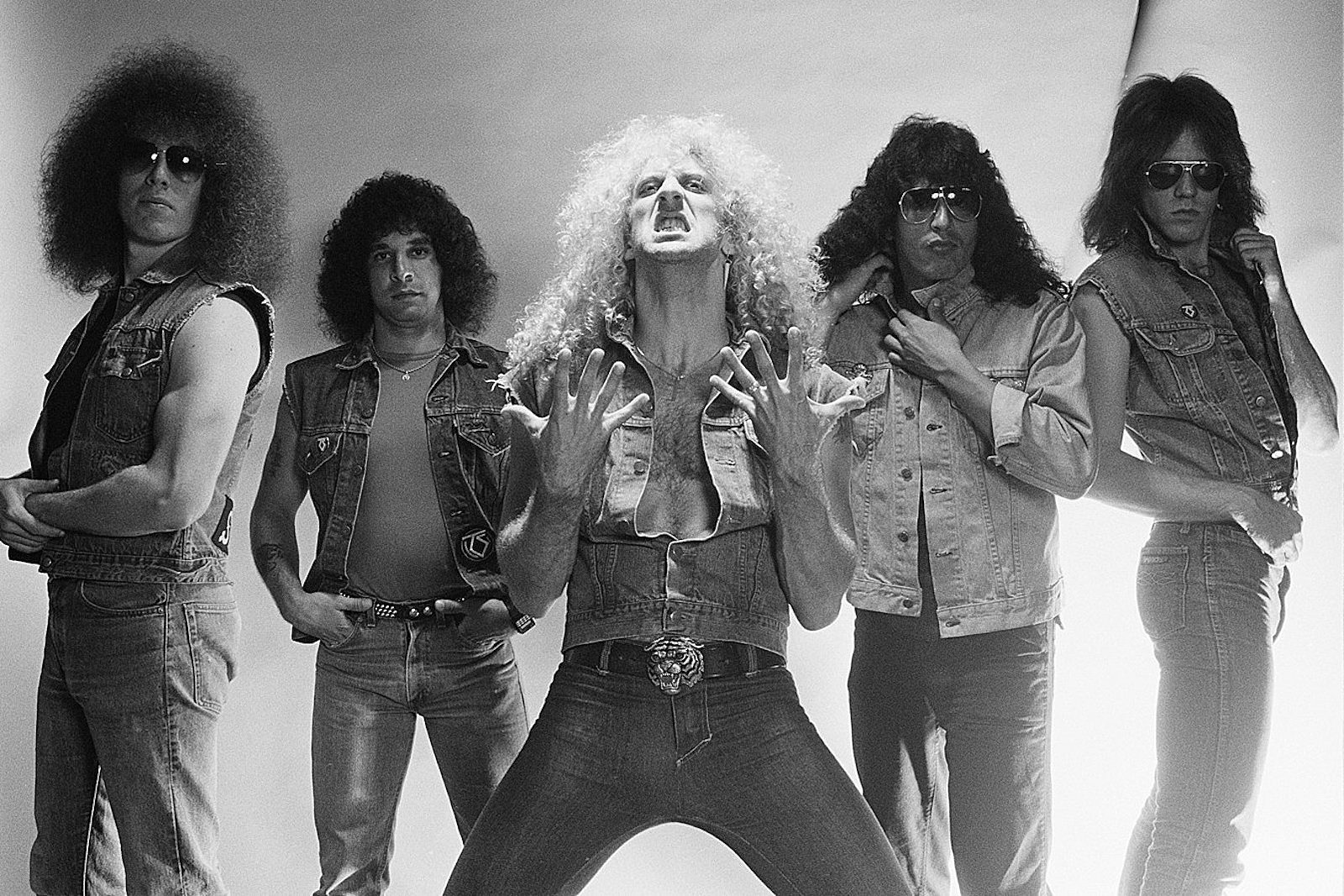
While those that don’t ride still like the track, it is definitely a song that riders immediately understand. Cold steel, hot exhaust, the feeling of speed, and the wind whipping at you. It also describes that hyper-aware state we all go into when on the bike, where we suddenly feel every vibration in the bike, the way the bike talks to us and tells us what the tires are doing, how the engine is feeling, all that… it’s almost poetic!
From another band that at times bordered on crossing over to metal, one of the greatest 80s glam rock songs came in 1987 by a tiny little band that no one knows… who are we kidding, it’s by Bon Jovi, one of the single biggest bands to ever come out of the 80s. Written and sung by hardcore Harley-Davidson enthusiast Jon Bon Jovi, the song in question is Wanted Dead Or Alive.
While mostly about comparing the then modern-day touring rock bands and bandits of the Old West, there is one specific line in the chorus that shows the influence that the motorcycle has, and makes a lot of the lyrics make sense if you understand the subtext. That line is: “I’m a cowboy, on a steel horse I ride / I’m wanted, dead or alive.” We don’t really need to go into depth about what the lyrics mean when talking about a steel horse, but if you listen to the rest of the song, lines like “I drive all night / just to get back home” suddenly take on a whole new meaning. Often understood as meaning the tour bus driving home, it’s actually been suggested, with Jon Bon Jovi keeping his lips sealed but with a big smile on his face, that the line refers to an all-night highway cruise.
One thing that remained constant throughout all three decades that we highlighted is that when a motorcycle is involved, it really shows in the lyrics and the tone of the song. Be it the distorted guitars of Meat Loaf with the whammy bar and string bends being used to imitate a motorcycle engine, the rapid kick of the drum from Twisted Sister that imitates an idling v-twin, or the words being outright about steel horses and the culture around riding, one thing we all can pick out is the difference between a song that includes motorcycles, and a song that is about motorcycles.
In fact, if it wasn’t for motorcycles, one of the biggest, yet lesser-known, music genres in the history of the world would have not gained anywhere near as much popularity. As alluded to earlier, after emerging throughout the 1970s as a subgenre of rock, we are of course talking about heavy metal.
Metal Music: Without Motorcycles, It Would Have Been Far Less Heavy
The first glimpses of what metal would become appeared in the late 1960s and early 1970s as rock songs that used faster drum beats, heavily distorted guitars, and vocalists that would sometimes change their voices into rougher tones to make a grittier sound. The pioneering bands that brought about the genre included legends like Black Sabbath, Led Zeppelin, and Deep Purple, and while motorcycles were not too involved in the origins of metal, it was the bands that formed in the 1970s and 1980s that were significantly influenced by two wheels.
The most popular of these, and also the most obvious, is Judas Priest. Starting out as a hard rock band in 1969, they were relatively unknown until around 1979, when they stabilized their lineup and changed their sound from hard rock to a more metal sound. For those that grew up in the 70s and 80s, you’ve more than likely heard one of their first smash hits, Breaking The Law, from their first true metal album, British Steel.
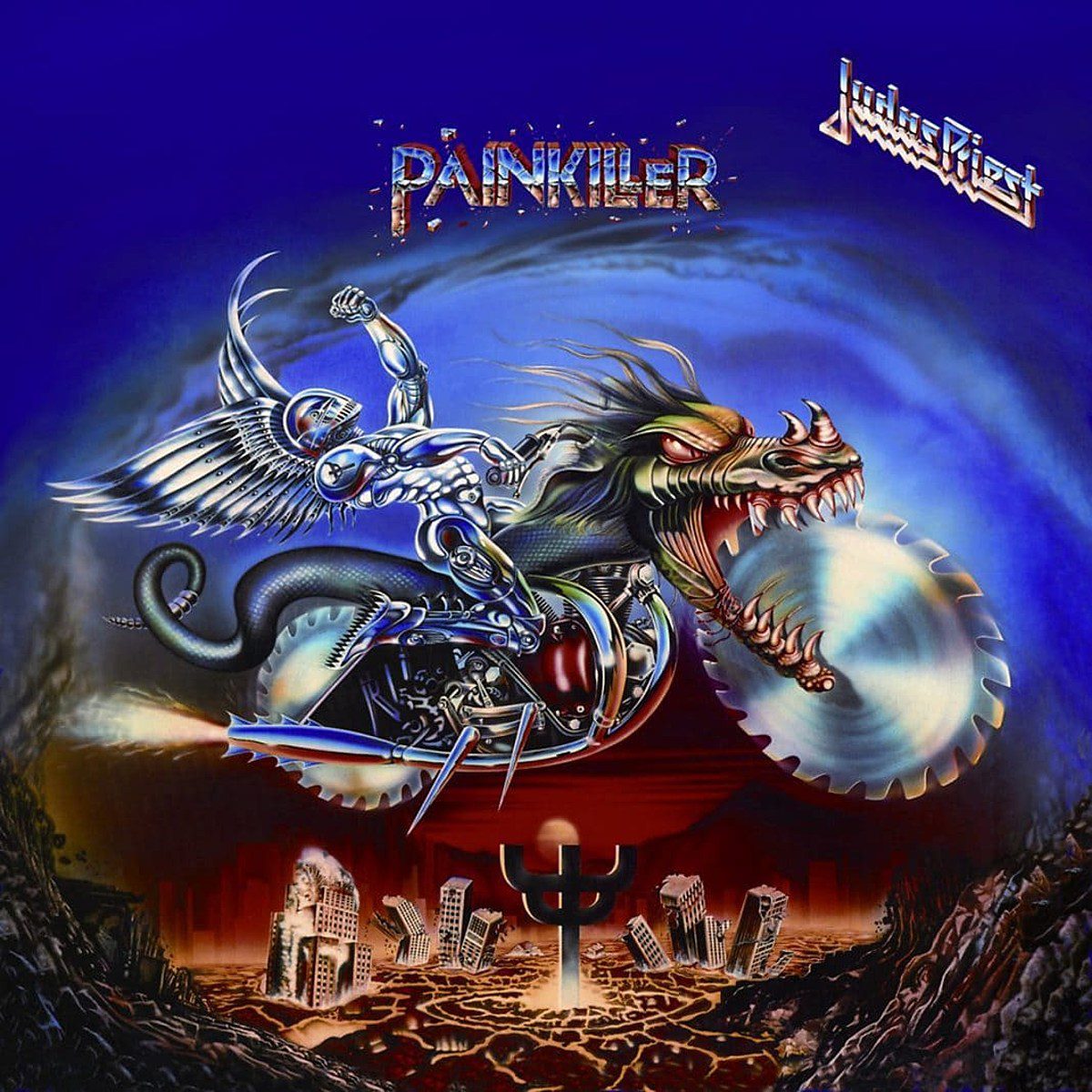
Around the same time, another band that crossed over from hard rock to metal formed. 1975 saw the birth of Motörhead, with inimitable lead singer Lemmy (real name: Ian Fraser Kilmister) being something of a motorcycle enthusiast. While their songs don’t specifically talk about motorcycles, quite often in their early music videos, bikes were a frequent theme, and even the name of the band is derived from the term that describes those that love any type of machine with an internal combustion engine.
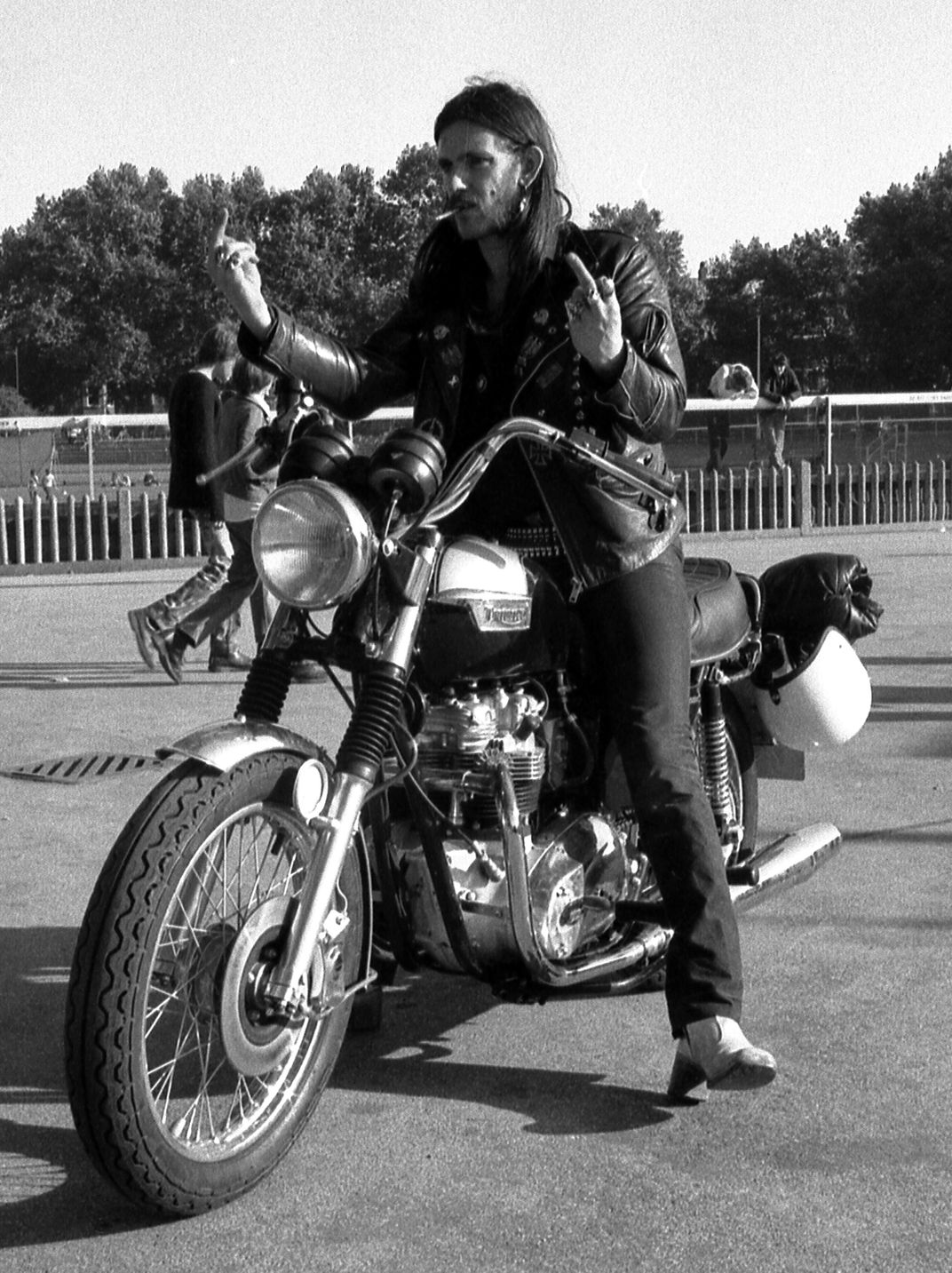
Both Judas Priest and Motörhead became extremely popular in the early 1980s, as the UK at that time was going through some particularly nasty political turmoil. The Troubles were in full swing in Ireland, the Falklands War happened, Thatcherism came about, there were about 20 million scandals at all levels of government… it was a time that needed escapism, and those early metal bands provided a lot of it.
It was also through the fans of those bands that motorcycle sales in the UK rose in the first half of the decade, as speedsters and bobbers gained rapid popularity. Lemmy often rode a Harley-Davidson Speedster in Motörhead’s music videos, such as Killed By Death, while Rob Halford of Judas Priest would ride his Harley on stage at the opening of a concert, and the bike would be on stage the rest of the show.
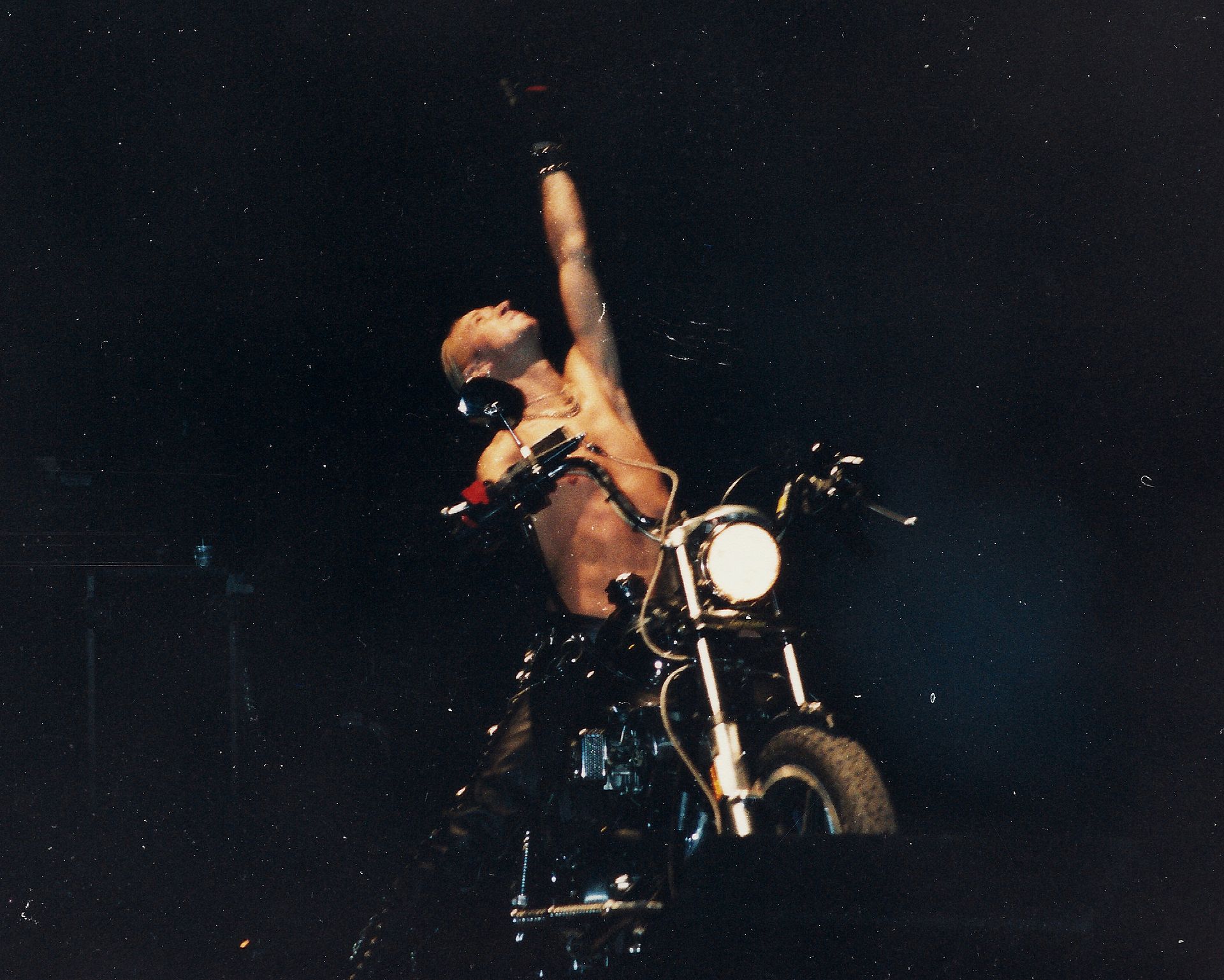
Why I mention these two bands in particular is because they launched a movement that carried from the late 70s to the end of the 80s, the New Wave Of British Heavy Metal (NWOBHM). Motorcycles, revving V-twins, riding leathers, the rebellious image, the fast paced songs that whipped the crowds up into an excited mass, it was all part of the movement, and it had worldwide implications. Legendary bands like Iron Maiden and Manowar formed during this period, and it was the NWOBHM that carried metal from a sub-genre into mainstream popularity.
To this day, one of the signature articles of clothing of an older school metalhead is the “patch vest,” originally used by motorcycle gangs and often made of leather or denim, to which every band that the wearer has seen live, that band’s patch is sewn on. Visiting the merch table at any concert by a band that even remotely has ties to the NWOBHM, you will see shirts, CDs, vinyls, EPs, and over on the corner of the table, a small pile of patches, which are often $5 or $10.
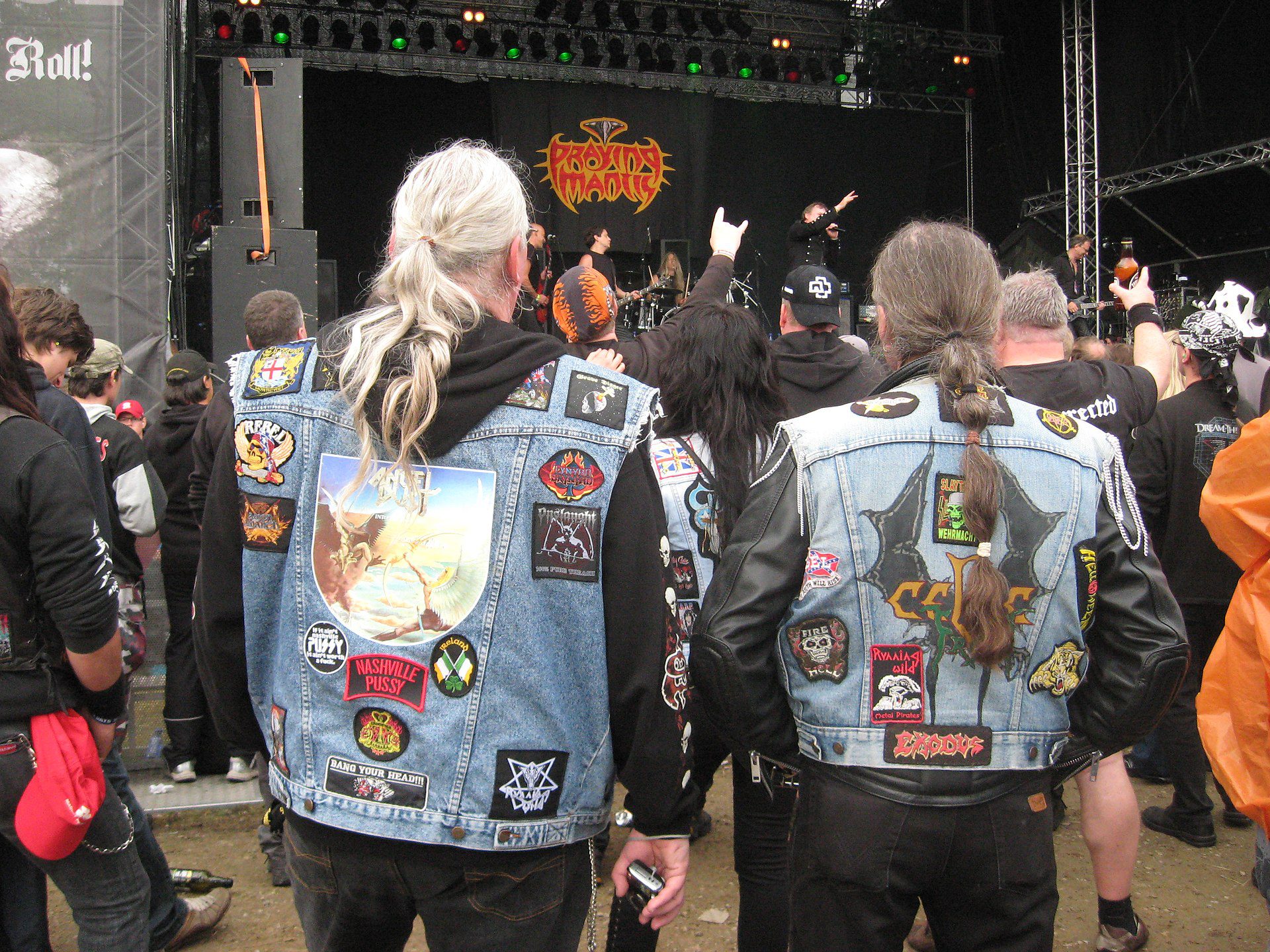
This is why the motorcycle, at the very core of the culture around them, is so intricately tied to heavy metal, especially the NWOBHM. It’s not so much cultural appropriation by metalheads, who were or still quite often are riders themselves, as it was the melding of two separate cultures into a new, unified whole.
If you’ve never been to a metal concert, it is definitely an experience. Some bands and music styles out there have their set groupings of fans, but you will rarely find a more diverse, cross-cultural group as you will on the floor of a concert by bands such as Arch Enemy, Halestorm, or even Metallica. It started with the NWOBHM, but the impact in metal culture is that everyone is welcome. Ride a motorcycle? Come on in. Drive a Ferrari? You can come on in too.
It could be argued that without the fact that motorcycles exist, metal would not have gone nearly as heavy, nearly as fast. A lot of the early singers rode them, the rebellious image about them was embraced into metal culture, and they are often the subject of a lot of NWOBHM songs. Even today, in such diverse styles of metal as gothic/symphonic metal, death metal, and even metalcore, you will find references to motorcycles in songs and themes.
The Future: As The World Goes Electric, Will Bikes Still Have A Place In Music?
Electric motorcycles are catching up quite rapidly with the level of development of electric cars, and multiple big name brands such as Honda, Yamaha, Harley-Davidson, and even Triumph, are all investing into research and development to bring about a new generation of electric motorcycles. This does, however, mean that there will no longer be a thumping single cylinder, a chugging V-twin, or a purring inline-four in the frame, and you won’t get the same noise as you do when you crack the throttle open on a Harley and get that big, loud snarl from the pipes.
Without those snarls and rumbles, those vibrations and thumps as pointed out above, metal would have been far less heavy. The key point about motorcycles and the start of heavy metal is that it was the right music, with the right influences, at the right time, to be able to break away from just being “slightly harder rock” into its own genre. It has only grown exponentially since then, creating sub-genres along the way that have become self-sustaining without the need for the thrum of an engine.
It’s the same with rock music, in that what was considered rock in the 60s through to the 80s is now considered classic rock or retro rock by modern standards. Granted, you will still find a lot more songs about motorcycles and riding in rock than you will in metal, but that is arguably because rock has about ten times as many bands, at the very least, currently active in the world than metal.
There is hope, however, as through the rise of metal into its own genre to stand alongside rock, the lines between the two have started to blur a little. A perfect example of this blending is the Foo Fighters song Monkey Wrench. While the lyrics are sung in a rock style, the galloping drums and chugging bass line just absolutely scream classic British Heavy Metal. Newcomers to the rock and metal scene, The Hu Band, feature a Mongolian biker gang in one of their first music videos for the song Wolf Totem.
The Hu Band are, in fact, perfect ambassadors for continuing the legacy of motorcycle-themed music and the connection between rock, metal, and our two wheeled steeds. The music they play is at the same time considered to be mongolian rock and folk metal, and Wolf Totem shows just how much motorcycles have influenced both.
Basically, to answer the question of if bikes will still have a place in music as the world goes electric, the answer is a very loud yes.


